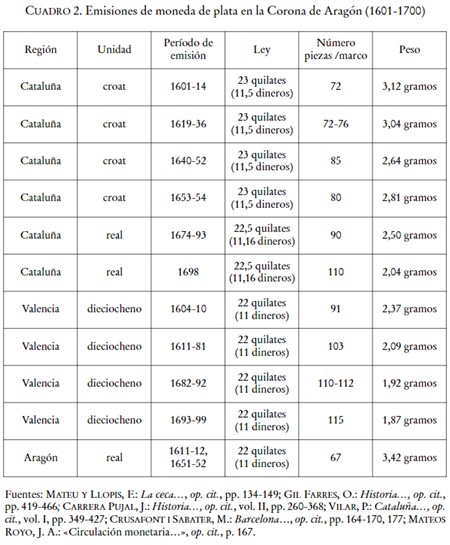
The discovery of America by the Hispanic Monarchy led to the use of Castilian reales in the Crown of Aragon due to the remittances of silver received by Castile. Ferdinand the Catholic sought to increase the legal value of the silver coins of the Aragonese crown so that they would not be annulled, nominally devaluing the vellon to facilitate conversion with the Castilian reales. The monarch refused to reduce the weight of the silver coins during his reign in order to prevent their export. why were the Valencian dieciochenos exported? Their weight in silver exceeded the nominal value which the law recognised. During the reign of Charles V between 1480 and 1598, the weight of the silver coinage in the Crown of Aragon tended to be reduced in the Kingdom of Valencia, without any loss of value. Thus, the weight of the Valencian dieciocheno was reduced by 25.25% in 1522 and by 29% in 1547. Compared to the Valencian money market, the Catalan one was more stable. In fact, the weight of the Catalan croat remained constant at 3.23 grams throughout the 17th century.
Collection: Statistics
Project: 2. Social and economic impact of technological revolutions in Europe., 3. Rural world and urban world in the formation of the European identity.
Chronology: XV, XVI
Scope: Secondary Education, Baccalaureate, University
Link: https://revistas.usal.es/index.php/Studia_Historica/article/view/9114/9352
Resource type: Statistics
Format: Table
Source: Mateos Royo, J. A. (2011). "Política estatal y circulación monetaria en la Corona de Aragón durante el siglo XVII: la depreciación de la moneda de plata", en Studia Historica, vol. 33, p. 213.
Language: Spanish
Date: 2011
Owner: Pablo Ballesta Fernández (Modernalia)
Copyright: ©Studia Historica ©José Antonio Mateos Royo
Abstract: Table analysing the evolution of silver coinage in the Crown of Aragon after the arrival of silver from the American continent
Image
Tags






